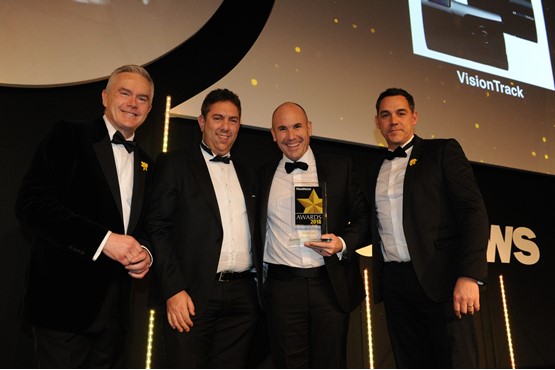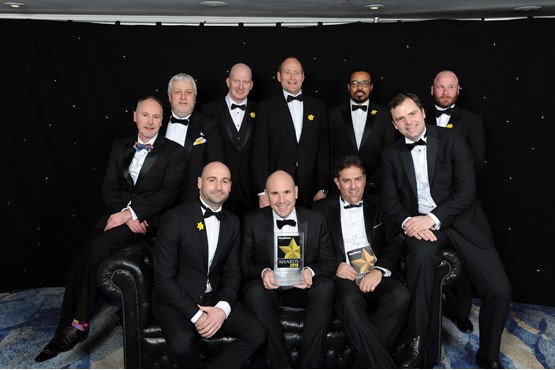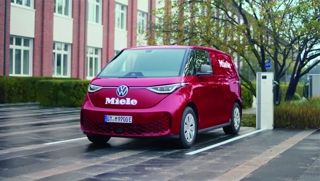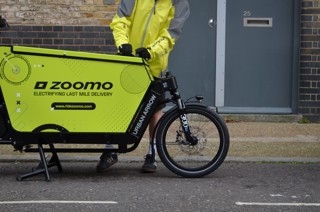VisionTrack has a clear objective to help fleets prevent incidents, reduce fraudulent claims, cut insurance premiums and, ultimately, save money.
Its combined video and telematics system gives fleet operators total visibility and can be used to produce vital evidence in the wake of a collision.
The company is a specialist supplier and manufacturer of vehicle CCTV technology, vehicle telematics and GPS tracking systems. Services range from single-vehicle monitoring systems up to large-scale fleet tracking.
Using artificial intelligence and machine learning, VisionTrack’s system can provide advanced driver assistance and support driver training.
It can recognise and alert the driver to potential hazards, such as an impending collision, plus identify and record dangerous driving behaviour such as tailgating and mobile phone use.
In the event of an incident, the system will automatically record and send a video clip in near real-time, along with associated telemetry, to the fleet manager.
The driver can also activate a panic function, which will open a live feed to the operator if the driver is in danger.
According to VisionTrack managing director Simon Marsh the key feature of the system is prevention.
With a road transport background, he has experience of being in a situation where the cause of an accident could never be established.
It is something Marsh is passionate about. “We can reduce road deaths through better behaviour. Fleets really are on board with reducing their claims and if you stop the smaller claims you might also prevent a bigger one,” he says.
“If you ask any fleet manager about the transition from normal telematics to video, it’s about the full picture. If there is heavy braking, you can see why before questioning the driver – it might be because a pedestrian walked out in front of the vehicle.
“Cameras, if used and reported back correctly, have the effect of making drivers drive more carefully because they know they are being monitored.”
Integration with data from other telematics providers and manufacturer-fitted systems is available, thanks to VisionTrack’s cloud-based platform.
The system can also be updated at any time and new sensors can be added and integrated within weeks, giving the potential for integration with a limitless number of devices.

Fleet News: What are the advantages of using a combined video/telematics system?
Simon Marsh: You can see in real time what the driver is doing and how he is behaving.
Cameras are sensors; you can do so much more with them than pure telematics data.
Video is now becoming the norm and we are a one-stop-shop for fleets. We have collaborated with some of the biggest telematics companies in the world, providing them with video technology.
Risk management drives it. One of our clients found that using our technology reduced frequency of incidents by 24% and claim costs by 18%.
As the world evolves, insurance is becoming more expensive and so it is always a challenge for fleets to reduce their insurance premiums.
Claim costs keep going up. Fraud is still an issue and as more technology comes around there is a higher risk of distractions.
We want to prevent claims in the first place. If the fleet manager has actionable data to use, they can prevent a claim happening.
Telematics can only give you an idea of what happened. Video confirms it.
In cases where there is a fatality, the system can enable police to identify that the driver was not at fault.
In terms of utilisation, you have better visuals. You can see if the driver is stuck in traffic, for example.
Prevention is the biggest thing. You are preventing downtime of vehicles. Any incident costs the business money.
With better behaviour, you see fuel reductions too.
FN: What data can fleet operators expect to get from VisionTrack?
SM: Fleet managers get a dashboard and they can choose what they want in it. We speak with all our fleets to find out what they are looking for.
Some insurers only want the post-collision data – others want to monitor risk and want reason.
We can run different reports for different fleets – every fleet wants something different.
We are flexible, using our in-house team of software developers; we often create bespoke solutions for a lot of our big fleet customers.
Ultimately, we are there to bring to their attention dangerous driving.
FN: How many cameras do you have connected?
SM: It is now reaching 25,000 and growing 25% month-on-month. August was an incredibly busy month for the business with 6,500 connections taking place. We now have more than 500 fleet clients.
From inception to where we are now, the growth has been incredible.
I’ve never seen so much demand for video telematics. We are mandatory now for many insurance companies including Markerstudy, Direct Commercial and Collingwood.
Insurers are now saying you have to use our technology to be insured. That applies across van and truck fleets – especially the higher risk ones.
The more insurers see the data reducing claims costs it becomes significant.

FN: How long does installation take?
SM: Dependent on what is requested, it can be from 45 minutes to a whole day. It also depends on the size of the fleet and its requirements. What is most import is the scalability of our platform.
Video is a big challenge for a normal telematics company as the data volume is so much higher. A single vehicle can push out as much data in a day as a usual telematics system pushes out in a month.
FN: What about data directly from a vehicle?
SM: Our whole platform is designed to listen to any data set. My vision is that one day it will all be in the vehicle and we will be able to pull all the data.
Historically, if you have vehicles from different manufacturers you would have to use different systems for each.
Ford is already pushing data out to third parties and I think the others will now. The customers want the data, some fleets have 5,000 vehicles and the fleet manager doesn’t want to start changing the system.
If you can get the data from the vehicle it will get rid of the downtime needed to fit systems.
The future is the connected vehicle and our platform is connected vehicle.
I can see more manufacturers heading into this space and the big win for fleets is when they allow that data to be shared.
Cameras are coming into vehicles too now, so certain vehicles will need no hardware at all.
VisionTrack has a clear commitment to improving driver behaviour and reducing claim costs for its customers.
Its platform not only allows fleet managers to choose how and when they receive notifications, but also accepts data from other providers.
By opening up its platform to other telematics companies, VisionTrack is helping to get more cameras fitted to more vehicles, opening up new opportunities for the insurance sector.
Usage Based Insurance (UBI) is seeing significant growth as new technology in vehicles provides live
“UBI in commercial is a natural ‘next step’ in this evolution,” said Marsh
“With extremely accurate pricing based on live data, it’s no surprise that it’s predicted to move quickly into the market.
“There are obvious benefits in cost-saving but also the potential prevention of incidents with monitored driver behaviour, ADAS features and live footage in the event of an incident,” he added.
By combining behavioural metrics, driver risk scoring, contextual data and video systems, insurers can build the next generation of insurance solutions for commercial fleets, not only offering a complete picture of fleet performance but an accurate risk per mile assessment.
Judges’ comments
VisionTrack is using artificial intelligence to develop its solution and incorporate cameras that recognise and alert hazardous driving behaviour such as mobile phone use or falling asleep at the wheel.
It has taken the complexity and potential higher costs away from fleets by combining telematics with a vehicle camera. The judges were impressed by its customer testimonials which demonstrated big improvements to fleet safety.




















Login to comment
Comments
No comments have been made yet.